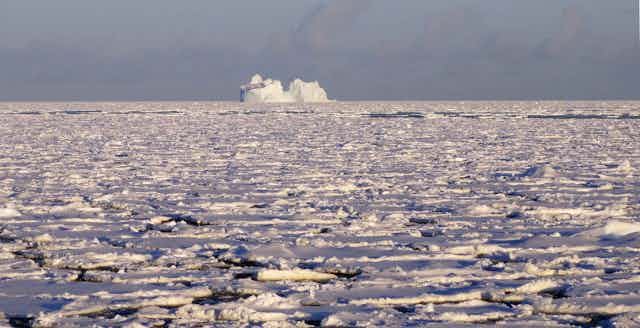Changing wildlife: this article is part of a series looking at how key species such as bees, insects and fish respond to environmental change, and what this means for the rest of the planet.
Hundreds of metres below the surface of the freezing ocean surrounding Antarctica, the seafloor is teeming with life. The animals living there have no idea that an army is on the brink of invading their tranquil environment.
The army is composed of king crabs. Until 2003, there were no crabs in this fragile Antarctic ecosystem. Now, driven by warming waters, their arrival heralds a major upset.
The unique communities living on the continental shelf off Antarctica are found in no other place on Earth. Delicate brittle stars, beautiful sea stars, vibrant sea lilies, and giant sea spiders are among the spectacular inhabitants found there. The animals live side by side, with almost no predators to upset the balance.
For millions of years, the cold water temperatures in the Antarctic have stopped most predators from surviving in this harsh environment. But this situation is rapidly changing.

Climate change is increasing temperatures across our planet, and the Antarctic is no exception. Sea temperatures in the Antarctic are rising at a faster rate than almost anywhere else.
With the increasing temperatures come new residents. Animals that have been absent from the continental shelf around Antarctica for millions of years are quickly returning.
The march of the king crabs
In every part of the world except the Antarctic, crabs are one of the major predators in seafloor communities. Their strong, crushing claws are deadly to snails, brittle stars, and other slow-moving animals.
However, on the continental slope and continental shelf surrounding Antarctica, icy water temperatures have kept crabs away. Crabs naturally take up magnesium into their blood from seawater, and they can usually control the level of magnesium in its blood. But at very low temperatures they cannot regulate it. Instead, the magnesium builds up in their blood.
It acts like an anaesthetic and eventually causes the crab to die. As a result, crabs have previously been unable to survive in Antarctic waters.
Water temperatures on the continental slope and shelf around Antarctica are now warming to levels that crabs can tolerate. Although they and other predators have been absent from the continental slope and shelf around Antarctica for millions of years, one group, the king crabs, have been living in the neighbouring deep ocean.
In the deep ocean around Antarctica, water temperatures have historically been warmer than on the continental shelf. But as shelf temperatures increase, the king crabs are beginning to move up the continental slope into shallower water.
In 2003, king crabs were seen on the continental slope off Antarctica for the first time. Since then, an increasing number of crabs have been reported. They are seemingly marching up the continental slope and towards the continental shelf, with nothing to stop them.

A smorgasbord of delicious treats
If king crabs move onto the shelf, they will be presented with a smorgasbord of invertebrates. King crabs do not care much what they eat. Any animal that falls into their path makes a delicious treat.
In the Antarctic, the native inhabitants are particularly at risk. These animals have evolved without any major predators for millions of years. In other parts of the world, animals living on the seafloor have thick shells or hard skeletons to protect them against predators like crabs.
But in Antarctica, they have very limited defences against predation. The animals have very thin shells, soft bodies, and light skeletons. They are an easy target for the rapidly approaching king crabs.

Climate change is already allowing king crabs to move into shallower areas of the continental slope off Antarctica than ever before. As temperatures continue to rise, we can only guess that the king crabs will continue their invasion onto the continental shelf.
When the crabs arrive, they are very likely to have a huge impact on the unique animals that live there. If nothing stops the king crabs from moving onto the continental shelf, the defenceless animals that currently live there may well become yet another casualty of climate change.

